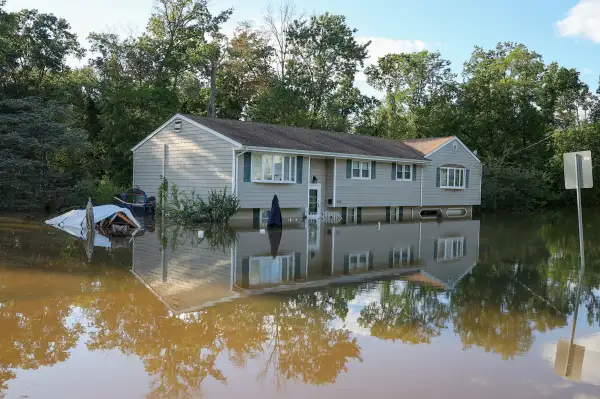Hurricane Ida Insurance Claims: A Smartphone Can Be Your Secret Weapon

If Ida has created the need to make a claim on your car or home insurance, the best tool to help you do that may be your phone.
In the wake of the storm, insurers are expected to receive hundreds of thousands of claims -- State Farm reports 30,000 so far in Louisiana alone, according to TV station WMBD.
Filing a claim used to mean waiting on a physical line, or a phone queue, to talk with the insurance company -- and it still will for many who suffered damage from Ida. But now you can also get in line with your insurer virtually, and streamline submitting a claim, by reaching into your pocket -- assuming you have a smartphone, and the storm hasn’t robbed you of the power to charge it or of your network service.
Here’s what to do with your device once it’s in your hands.
Document damage with your phone's camera
After a catastrophic loss, it’s natural to want to begin cleaning up -- say by disposing of damaged items and searching for those that might still be salvageable.
But resist the urge, at least immediately. “The biggest mistake people make in filing insurance claims is not remembering to document and photograph the damage before any clean up begins,” says Ruth Fisk, Vice President of Insurance Marketing at Smart Communications.
Use your phone’s camera to take still shots of the damage. You might also consider a video walkthrough of your home or property, including narration that describes the lost or damaged items, especially if they are no longer recognizable.
In the case of appliances and equipment, try if possible to zoom in on labels to capture model and serial numbers. This information will be needed later if those items need to be replaced -- and this is an easier way to get it than digging through receipts and the like, which might be destroyed now anyway.
The phone camera can also be useful for taking images of receipts for disaster-related expenses. Doing so as soon as you get these can help head-off what Fisk says is a second common error by claimants after a disaster: Remembering to keep receipts of all expenses incurred.
File the claim via phone
Insurers have “teams on the ground” in affected areas for filing Ida claims in person, according to Mark Friedlander, head of corporate communications with the Insurance Information Institute. They are also mobilizing to respond in other ways, including through increased phone support for customers.
But Friedlander also notes that “many national and regional carriers have apps to file claims where you can upload damage photos. This will make the claims-filing process simpler for many.”
While most such apps allow a claim to be made from the app itself, some instead require that you submit photos and other claims data via browser or email. But the app itself should at least have links to those URLs, and filing from the phone may still be the most convenient option, since you will easily be able to attach image files to the message or drop them into forms on the insurer’s website.
Most major insurers now have mobile apps, though the list unfortunately does not include the National Flood Insurance Program, which writes the majority of flood policies.
Also, of course, not all affected insurance customers own smartphones or are comfortable in using their apps, especially for tasks that include attaching images and the like. And that, says Friedlander, is why it is so important for insurers to offer multiple ways for policyholders to file a storm claim.”
More from Money:
Best Homeowners Insurance Companies of 2021
What Insurance Will (and Won't) Cover If Your Car or Home Was Ruined By Ida
Why You Should Consider Flood Insurance Even if You Don’t Live in a Flood Zone

